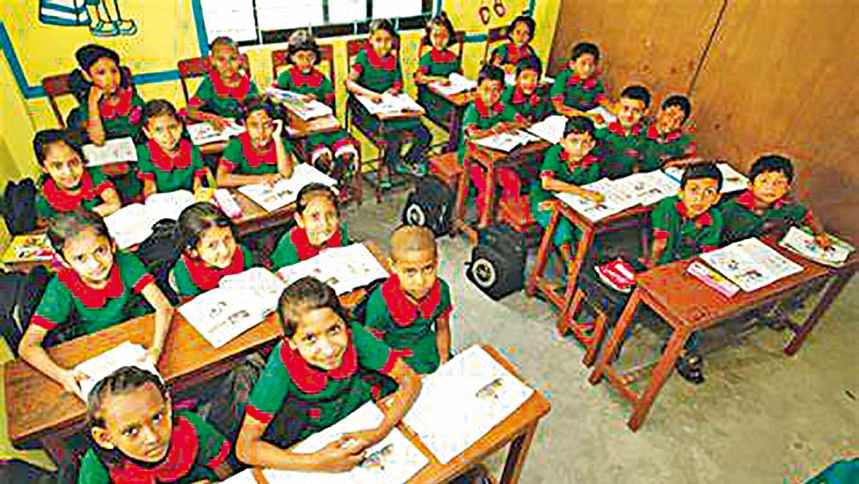Banning notebooks: Legal framework and shortcomings

The purpose of education is not only to acquire knowledge, rather it is the process which contributes to the overall development of individuals. Creative education systems (hereinafter called as CES) generate critical thoughts among the students, and promote innovativeness.
For the first time, the CES in Bangladesh was introduced by the Education Policy 2010. In the 2012 National Curriculum, emphasis was given on CES. Since then, it has been applied in the secondary and higher secondary levels of education.
The duty to examine curricula and syllabi of schools and to arrange for the publication, distribution and sale of textbooks, is given to the National Curriculum and Text-Book Board, or NCTB (section 3 of National Curriculum and Text-Book Board Ordinance, 1983). The NCTB has been allowed by specific legislation to regulate the textbooks which are to be used by the schools as mentioned in the said legislation (Section 15 of the Ordinance).
Before the adoption of CES, Bangladesh incorporated a law titled the Note-Books (Prohibition) Act, 1980. The preamble of the Act reveals that it has been enacted to prohibit printing, publication, import, distribution and sale of note-books on text-books for primary schools and secondary schools up to Class VIII. This Act defines a notebook as any printed book that contains notes, annotations, explanations, comments, references, answers or solutions to any question on any subject or matter in or translation or paraphrases of any part of any text-book.
Further, this Act clarifies the meaning of text-books as books published by or under the authority of the board for primary school or secondary school up to class VIII. Section 3 of this Act prohibits the printing, publishing, importing, selling, distributing and circulating any notebooks in connection with the text-books. The violation of this provision is made punishable up to 7 years imprisonment or fine up to 25 thousand taka or with both (section 4). There is an exception under section 2(b) that permits printing and publishing notebooks only with the permission from the Board. The Act shows a strong stance against notebooks long before the incorporation of CES as an education policy in Bangladesh.
However, notebooks are widely popular among students. So, the question as to why students rely on notebooks needs proper empirical research. Some of the general reasons that we find are multi-faceted, the fact of which testifies that our textbooks are by no means completely education-friendly. The practice questions can be used as an example to substantiate this point. In a notebook, each chapter contains about 10-15 creative essay questions and each chapter averages about 300+ different types of creative multiple-choice questions with answers. On the other hand, the textbooks provide some 5-8 creative multiple-choice questions only and the questions remain unanswered. In the case of a creative multiple-choice question, a student does not get guidance on how to answer questions in the first place. This further motivates students to rely on notebooks instead of NCTB prescribed textbooks.
Another problem lies with The Note-Books (Prohibition) Act, 1980 itself: there are no clear-cut provisions of enforcement mechanisms in case of violation. Furthermore, the applicability of the Act only extends up to Class VIII which hinders the development of a uniform culture of reliance on textbooks only. The spread of notebooks should also be controlled in the ninth, tenth and at the higher secondary levels. To reduce the dependency on notebooks, banning notebooks is not enough. The text-books should be prepared in such a way that the students do not feel the need to seek help from notebooks. Besides, the teachers should be given proper training on CES.
The writers are Students of Law, University of Dhaka and University of Chittagong, respectively.

 For all latest news, follow The Daily Star's Google News channel.
For all latest news, follow The Daily Star's Google News channel. 



Comments